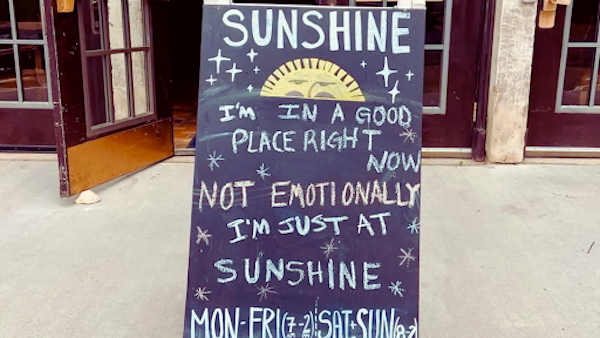The Biodiversity Conundrum: Building a Shared Future
It has taken the world almost 40 years to (largely) accept that climate change is happening, but the world doesn’t have another 40 years to accept that biological diversity faces accelerating diminution from anthropogenic behaviors. Biodiversity—its successes and its failures—is a critical sounding board for the long-term sustainability of all life, including human life, on our planet. Vicki Brady, MSc, FEIANZ, CEnvP, President of the Environment Institute of Australia and New Zealand (EIANZ) and Environment Business Partner at AGL Energy, shares a call-to-action for environmental and sustainability practitioners everywhere: unite as we have never done before in a global, coordinated, and sustained effort to use the best science we have to advance positive ecological projects.The UN International Day for Biological Diversity is 22 May, this year tackling the theme of Building a shared future for all life. Biodiversity—its successes and its failures—is a critical sounding board for the long-term sustainability of all life, including human life, on our planet.
As a Scot now living in Australia, I have been exposed to the biodiversity across northern Europe, the tropics of Far North Queensland, drought-ridden Central and Southern Queensland, and beyond.
As an environmental scientist, I am familiar with the vast spectrum of Australia’s and the region's uniquely rich biodiversity. Australia is home to an estimated 300,000 species, of which only one-third have been described. This includes 250 species of native animals, 550 species of birds, 680 species of reptiles, 190 species of our wonderful frogs, and more than 2,000 species of fish. The remainder comprises invertebrates, including insects.
Our neighbor across the Tasman Sea, Aotearoa New Zealand, is home to an estimated 70,000 terrestrial flora and fauna species. The relative geographical isolation of New Zealand also means that many of these species are endemic, including over 80% of the 2,500 species of native conifers, flowering plants, and ferns. And let’s not forget the descendant of the Triassic Period, the delightful tuatara, which until 2008 had not successfully bred on the New Zealand mainland in over 200 years.
Looking further to our neighboring nations of the Pacific Islands, we see some of the most complex and richest terrestrial and marine ecosystems on Earth, inhabited by small populations living largely off the land and in collaboration with the biodiversity around them.
Climate and biodiversity: an interrelationship
All this—and biodiversity everywhere—is at risk. As is our human population across the globe. We can no longer think of environmental values as individual criterion on the local scale. Climate change is threatening species survival, habitat success, water temperatures, and seasonality across our planet. We are an interwoven, global melting pot of biological needs.
Up to half of the current global biodiversity is at risk of extinction in the next 200 years. That won’t take a generation to resolve. Someone much better at modelling than I am tells me it will take approximately one million years to recover from that level of biodiversity loss.
Climate change and biodiversity go hand in hand. Ecosystem health is essential to mitigating our climate crisis; and the climate crisis accelerates our diminishing biodiversity. It has taken the world almost 40 years to (largely) accept that climate change is happening, but the world doesn’t have another 40 years to accept that biological diversity is being impacted by anthropogenic behaviors. I'm confident we don't need that long.
The Game of Tetris
We must draw upon the knowledge of our First Nations Peoples, regardless of our global region. I would argue even further that we could consider the pre-human environment in some cases to assist with dramatic, yet ecologically beneficial, reforestation of historically cleared areas. Incorporating these techniques into our agricultural practices can lead to a net positive outcome for the environment. Reducing our reliance on chemical treatments and working with more traditional methods where possible will enable biological benefits from insects, birds, and native plants.
I paint somewhat a bleak picture, and I do so to drive home the urgency of action that is required to deliver the outcomes the Australasian Region, as well as the planet, requires for our success. But it’s not all bad.
Globally, we see the greening of urban areas with rooftop spaces, community gardens, and canopy cover commitments. We see projects incorporating biodiversity into design through fauna bridges, from the simplest rope bridges to complex habitat structures over tunnels. Legacy mine pits are repurposed for recreational water activities and for pumped hydro projects in the renewable energy and storage industry, reducing the ecological footprint of renewable projects advancing decarbonization. Simple ideas being applied to solve complex problems will continue to benefit all living things.
And offsets? Here in Australia, offsets are notoriously complicated and triggering an industry of regulation and compliance. To optimize impacts, any site must be monitored to understand if we are contributing to a net loss or a net gain. It’s time to invest in ecological monitoring: camera traps, time-lapse videos, acoustic monitoring, community groups, professional teams, and volunteers to ensure offsets are well implemented, tracked, and successful. Offsets aren’t the solution to our problems, but they contribute to mitigating biological impacts.
We are all on the same team
Writing to you from my home in a post-flood Brisbane, Queensland, where many families remain displaced, I look to us all for what we can do to mitigate impacts from the climatic changes that each one of us is now experiencing as part of life. Embracing positive ecological projects, such as reforestation and planting of mangroves, as well as appropriate fire management, we can work together to reduce impacts caused by climate change and to steward our potential for ecosystem health.
I have been privileged to represent the Environment Institute of Australia and New Zealand (EIANZ) in various roles for almost 14 years and now serve as President. I invite environmental and sustainability practitioners everywhere to unite as we have never done before in a global, coordinated, and sustained effort to use the best science we have. We must harness the knowledge, understanding, expertise, passion, and ingenuity of practitioners around the world.
Nature underpins our lives. It underpins our very existence. Biodiversity and its success are fundamental to our social, economic, environmental, cultural, recreational, and spiritual well-being. Can you think of another system in which just being in it is scientifically demonstrated to improve mental and physical health? National parks, state forests, beaches, mountains, rivers, lakes, the ocean—we are all part of biodiversity.
Humans must remember, and it is our job as environmental and sustainability professionals to ensure, we are but one (albeit numerous) species in the biodiverse place that we call Earth.
PHOTO: Loretta Rosa | Blue Mountains, NSW | Unsplash
About the Author:
Vicki Brady, MSc, FEIANZ, CEnvP
President, Environment Institute of Australia and New Zealand
Environment Business Partner, AGL Energy
Read perspectives from the ISSP blog



